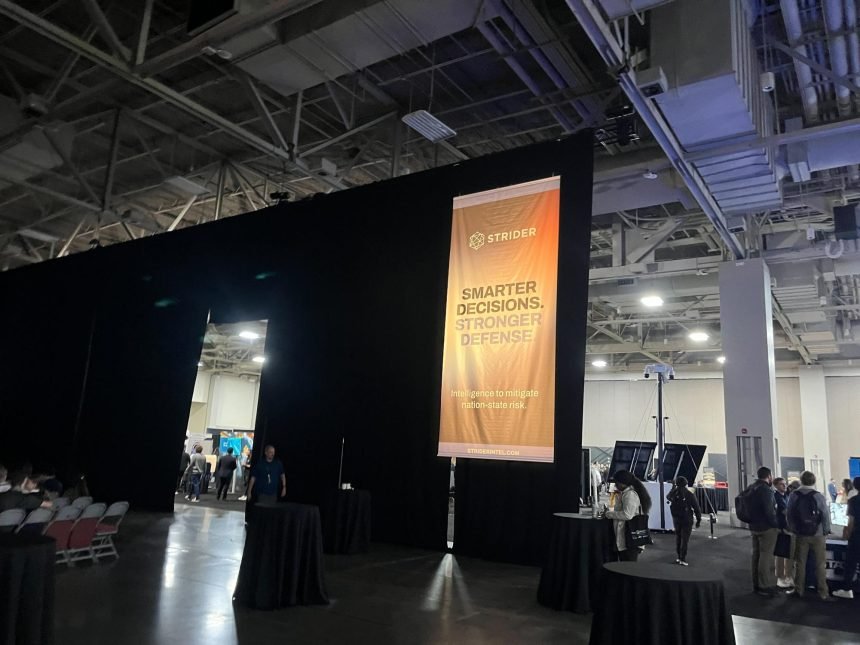Held in downtown Salt Lake City at the Salt Palace, the Zero Gravity Summit brought together policymakers, innovators and thought leaders to discuss and shape the future of dual-use technology and national security.
The two-day summit began on Tuesday, Nov. 4, focusing on defense technology and the new space economy. The following morning, Wednesday, Nov. 5, sessions focused on energy production and grid security, as well as the future of flight. The second day concluded with speeches from various aviation executives and two-time super bowl champion, five-time NFL MVP and former Broncos quarterback, Peyton Manning.
Morning Session
Nuclear energy
A key theme of day two’s morning session was the advancement of nuclear energy. “Nuclear energy is still a relatively new technology; there’s so much left to discover,” said Isaiah Taylor, CEO and founder of Valar Atomics, during a discussion.
Taylor and Joel Ferry, executive director of the Utah Department of Natural Resources, spoke about the growing potential for nuclear energy innovation, particularly in reducing costs through mass production. Both emphasized that embracing emerging technologies could position Utah at the forefront of energy advancement. “Nuclear energy is the safest form of power generation and one of the most stable in terms of load,” Taylor said.
Taylor highlighted that the public often forgets why there has been such a strong push for nuclear expansion. “What people often overlook is how inexpensive it truly is. We’ve forgotten that the original drive for nuclear energy stemmed from its affordability as a power source.”
In another discussion, Bobby Gallagher, CEO, CTO and co-founder of Deployable Energy, spoke about his views on nuclear energy. “What excites me most is that we’re now in an era of genuine demand for nuclear energy, a true pull rather than the historical push. Whether it’s computing, electrification, decarbonization or resilience, there’s an enormous and growing need for this technology,” said Gallagher.
Utah’s role in energy expansion
Another major focus in the morning session was Operation Gigawatt, an initiative announced by Utah Gov. Spencer Cox in 2024 to double the state’s power production over the next decade. This topic was explored further in a panel discussion moderated by Wayne Aston, CEO of Invictus Sovereign, who raised a key question: how will society meet growing energy demands amid the rapid expansion of artificial intelligence?
“If you take all of our capacity, all of our generation in total, we are about 1200 gigawatts, and half of that has been built in the past 20 years. We need to build 600-800 gigawatts in the next 10 years. Our grid was never built for AI, or whatever comes next,” said Dave Murray, chief business & communications officer at Invictus Sovereign.
Aston reflected on an earlier discussion, noting that roughly 20% of Utah’s GDP is tied to aerospace, defense, and deep tech industries, and expressing a goal to see that figure double in the coming years.
“Utah is starting from a running start; the state has been involved in aerospace since the industry’s early days,” said Rick Sanford, CEO of Complete Aerospace Solutions, Inc. “Utah’s regulatory environment and state legislature have been tremendous in driving innovation, and the state offers an exceptional quality of life compared to other aerospace hubs in the U.S. The most important next step is ensuring that technical education continues to play a leading role in fueling this innovation.”
Ferry and Taylor also mentioned the importance of Utah entering the energy industry. “The states and governments that choose to lean into innovation like this, especially in nuclear energy, stand to benefit enormously,” Taylor said. Ferry added that Utah could play a defining role in that future due to its natural resources. “Achieving a superabundance of energy starts right here in Utah,” he said.
Afternoon session
Project Alta and advanced air mobility
Chris Metts, the vice president of aerospace and innovation for 47G, kicked off the afternoon session by discussing Project Alta — a public-private partnership in Utah that plans to invest in advanced air mobility for Utah. The plan aims to “modernize” air travel, with Metts explaining it could cut travel times from Salt Lake to Park City to 10-20 minutes. And Metts, the executive director of Project Alta, said there could be Project Alta aircrafts in Utah’s airspace “by June of next year.”
He then welcomed Michael Huerta, former administrator of the Federal Aviation Administration (FAA) from 2013-2018, to the stage. Huerta, a resident of Park City, discussed the impact of a government shutdown on federal air traffic control. He said mandatory safety services always continue during a government shutdown, but following a prolonged shutdown, there could be slight disruptions.
Ihssane Mounir, the senior vice president of global supply chain and fabrication for Boeing, discussed Boeing parts manufacturing in Utah. He referenced Boeing’s aerospace manufacturing facility in West Jordan, explaining that every Boeing airplane contains parts built in Utah.
Afterwards, Blain Newton, the chief information officer for BETA Technologies, an aerospace company, talked about BETA’s role in “deploying the advanced air mobility ecosystem,” a newer concept in aviation involving vertical takeoff.
Peyton Manning talks leadership
Finally, the event concluded with a fireside chat between Peyton Manning and Aaron Starks, the president and CEO of 47G. Their conversation ranged from Manning’s early career in college and the NFL, to his recent business ventures in the entertainment industry, to the building of a championship team — both in sports and in business.
Manning’s speech garnered the largest crowd of the afternoon, as the former Super Bowl champion drew Broncos fans and business people alike. He did not discuss 47G or tech talking points. Manning’s discussion was focused solely on his own career and experience.











